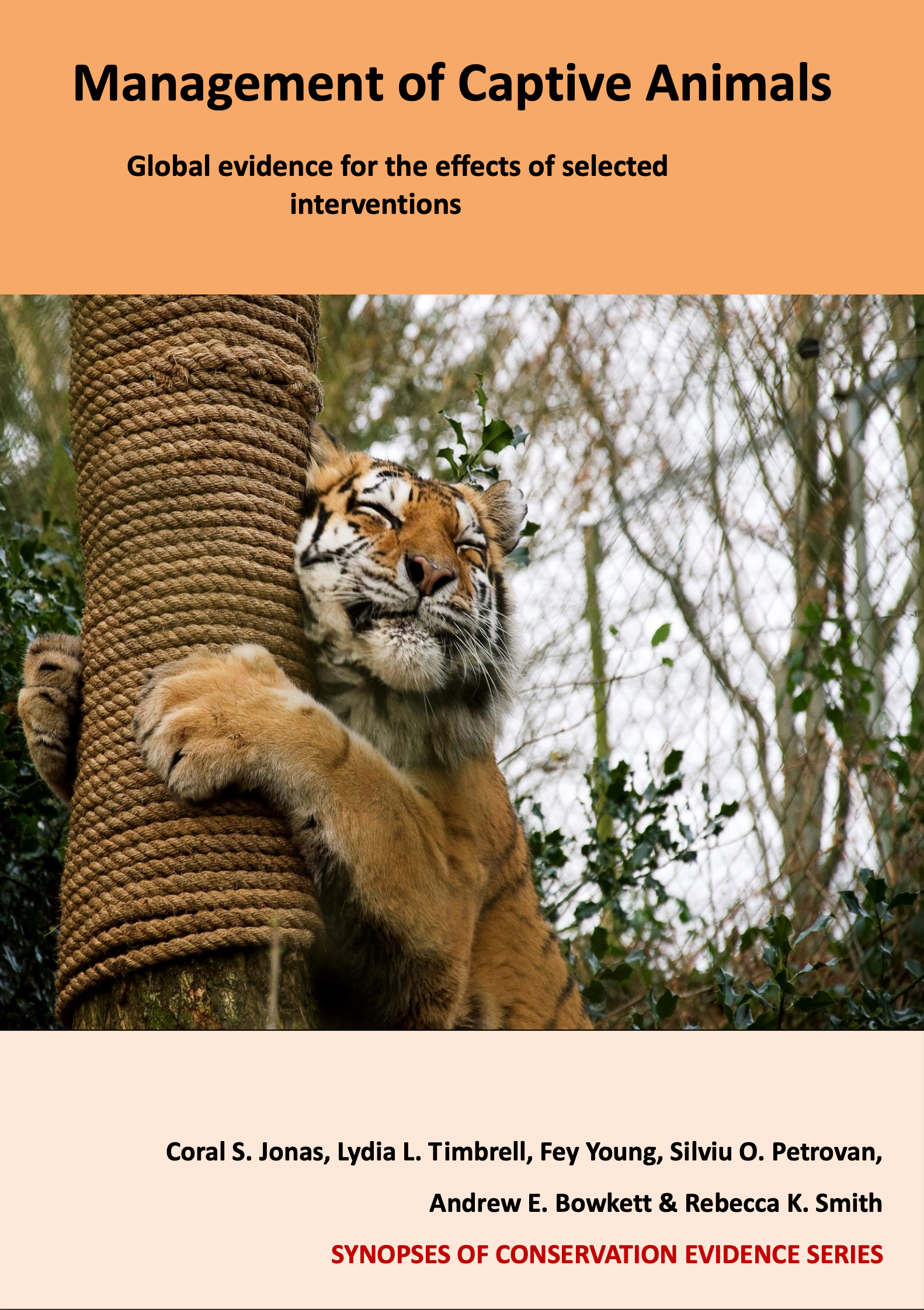Primates: Formulate diet to reflect nutritional composition of wild foods (including removal of domestic fruits)
-
Overall effectiveness category Likely to be beneficial
-
Number of studies: 2
View assessment score
Hide assessment score
How is the evidence assessed?
-
Effectiveness
70% -
Certainty
60% -
Harms
0%
Study locations
Supporting evidence from individual studies
A before-and-after trial in 1999 in the USA (Lukas et al. 1999) found that replacing milk with fruit juice in gorilla Gorilla gorilla gorilla diets led to a significant decrease in voluntary regurgitation and reingestion of food or fluid from stomach to mouth and an increase in feeding behaviour. Regurgitation and reingestion were reduced from 11% of the time when milk was given to 8% of the time when fruit juice was offered instead of milk. In addition, the consumption of hay doubled from 10% to 22% of the time in the evening meal. The study used a withdrawal design method, in which 10 days of feeding non-fat powdered cow’s milk was followed by a treatment period of 10 days when milk was replaced with apple, orange or pineapple juice followed by a return to feeding milk for 10 days. Seven males and 12 females were studied for five minute sessions during a one hour period during the evening meal. (CJ)
Study and other actions testedA replicated, before-and-after, site comparison study in 2012-2013 in Cornwall and Devon, UK (Britt et al. 2015) found that when fed a domestic fruit free diet, aggression and self-directed behaviour in four species of lemurs, were significantly lower. Self-directed behaviour reduced from an average rate of 0.28 times/minute when fed fruit to 0.1 times/minute when no fruit was provided. Aggression reduced from an average of 1% of time when fed fruit to 0.1% of time when no fruit was provided. There was no significant effect of diet on foraging and auto grooming. Four species of lemur (17 individuals Varecia variegata, Varecia rubra, Lemur catta, Eulemur coronatus) were observed for 35 days at 15 sessions of 20 minutes at Paignton Zoo, during May–July 2012, and 30 sessions of 20 minutes at Newquay Zoo, during May–July 2013. The transition to a vegetable and leaf-eater pellet diet, which excluded fruit, was implemented over the course of a week. Observations were carried out before and after the diet change. (CJ)
Study and other actions tested
Where has this evidence come from?
List of journals searched by synopsis
All the journals searched for all synopses
This Action forms part of the Action Synopsis:
Management of Captive Animals
Management of Captive Animals - Published 2018
Captive Animal Synopsis





)_2023.JPG)














